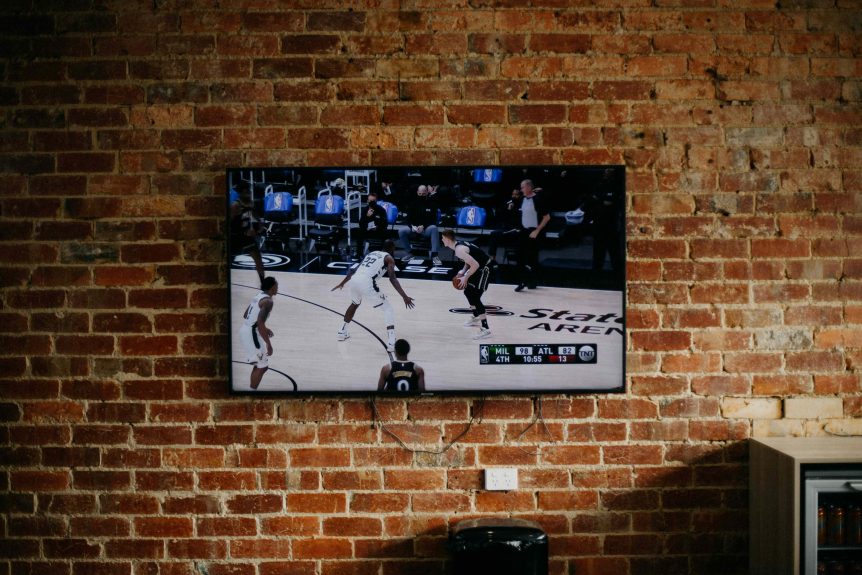When planning a traditional television advertising campaign, businesses have two primary options: broadcast TV and cable TV. Each offers unique benefits, and the best choice depends on factors like budget, audience reach, and targeting needs. While broadcast TV provides broad exposure, cable TV allows for more precise targeting through zoning. Understanding the strengths and limitations of both can help advertisers make an informed decision.
However, navigating these choices can be complex, so it’s crucial to work with a local media buyer. Media buyers understand the nuances of both options, helping businesses maximize their ad spend while ensuring their message reaches the right audience.
Broadcast TV Advertising: Wide Reach & High Impact
What is Broadcast TV?
Broadcast TV consists of major networks such as ABC, NBC, CBS, FOX, and The CW, which are available for free over the air and included in most cable and satellite packages. It is the most traditional form of television advertising and remains a powerful way to reach large audiences.
Pros of Advertising on Broadcast TV
1. Massive Audience Reach – Broadcast TV reaches nearly every household, making it ideal for businesses that need broad exposure across an entire region or country.
2. High Credibility & Brand Awareness – Ads on broadcast networks often carry a sense of legitimacy, as these networks have long-established reputations.
3. Live Event Advertising Opportunities – Major live events like the Super Bowl, the Olympics, the Oscars, and breaking news coverage attract millions of engaged viewers.
4. Less Fragmentation– Unlike cable, where audiences are spread across hundreds of niche channels, broadcast TV consolidates viewership into a few major networks, making it easier to reach a broad demographic.
5. Best for National & Regional Brands – Because broadcast TV covers entire markets, it is highly effective for companies with broad customer bases, such as automotive brands, retail chains, and political campaigns.
Cons of Advertising on Broadcast TV
1. Higher Cost– Because of its vast reach, broadcast TV ads are more expensive than cable ads, particularly during primetime slots or high-profile events.
2. Limited Geographic Targeting – Broadcast TV advertising is typically sold at the DMA (Designated Market Area) level, meaning ads air across an entire metro area rather than in specific neighborhoods or towns. This can lead to inefficiencies for local businesses.
3. Less Niche Targeting – While certain shows cater to specific demographics, advertisers have less control over audience segmentation than cable, where networks focus on particular interests (sports, business, entertainment, etc.).
Cable TV Advertising: Targeted Reach & Cost Efficiency
What is Cable TV?
Cable TV includes networks like ESPN, CNN, HGTV, Discovery, and FX, which are delivered through cable providers such as Comcast, Spectrum, and Xfinity. Unlike broadcast TV, cable channels often focus on specific interests, allowing for more precise audience targeting.
Pros of Advertising on Cable TV
- Zoned Advertising Capabilities – One of the biggest advantages of cable TV is zoning, which allows advertisers to target specific cities, counties, or even ZIP codes. This makes it a cost-effective option for local businesses.
2. Lower Cost Per Spot—Because cable has smaller audiences than broadcast TV, ad placements tend to be more affordable, allowing businesses to run ads more frequently.
3. Niche Audience Targeting – Cable networks cater to specific demographics and interests, such as sports fans (ESPN), home improvement enthusiasts (HGTV), or finance professionals (CNBC). This helps advertisers reach a more relevant audience.
4. Increased Frequency – Since cable ads are less expensive, businesses can afford to air commercials more frequently, reinforcing brand messaging over time.
5. Best for Local & Niche Businesses – Small and mid-sized businesses benefit from the ability to target specific areas rather than paying for a broad market they may not serve.
Cons of Advertising on Cable TV
1. Smaller Audience – Cable networks have fewer viewers than major broadcast networks, meaning advertisers may need to place ads on multiple channels to achieve broad reach.
2. Subscriber Dependence—With the rise of cord-cutting and streaming services, traditional cable subscriptions have declined, reducing the number of potential viewers. As a result, OTT Streaming TV advertising has increased. We write a lot about advertising on connected TVs, too!
3. Fragmented Viewership – Because cable offers hundreds of channels, audiences are spread out, requiring advertisers to select which networks align with their target demographics carefully.
4. Less Reach for National Campaigns – While zoning is excellent for local businesses, national brands may find it inefficient to advertise on multiple cable networks instead of reaching a broader audience with broadcast TV.
—
Why Using a Local Media Buyer is Essential
Deciding between broadcast TV and cable TV isn’t always straightforward. This is where a local media buyer becomes invaluable. Media buyers are experts in navigating the complexities of TV advertising, ensuring businesses get the best return on investment.
How a Media Buyer Helps:
1. Maximizing Budget Efficiency – A media buyer knows how to negotiate better rates and allocate ad spend effectively, whether it’s on broadcast, cable, or a combination of both.
2. Choosing the Right Networks & Time Slots – They understand which TV networks and time slots will provide the best exposure based on your audience and marketing goals.
3. Understanding Local Viewing Habits – Different regions have unique viewing preferences. A media buyer uses local market data to place ads where they will have the most impact.
4. Combining Broadcast & Cable for Maximum Impact – Many successful campaigns use a mix of broadcast and cable TV to balance broad reach with targeted messaging. A media buyer helps craft the right strategy.
5. Tracking & Optimizing Performance – A media buyer monitors ad performance and adjusts placements to improve results.
If you’re a national or regional brand looking for maximum reach and credibility, broadcast TV may be the best choice. It provides unmatched exposure, making it ideal for companies that must reach a broad and diverse audience.
If you’re a local business or have a niche target audience, cable TV may be the better fit. Its zoning capabilities allow for precise geographic targeting, making it cost-effective and efficient for businesses that serve specific communities.
Both advertising options have unique strengths, and the best strategy often involves a mix of both. If you’re a business or brand that would do better with streaming TV advertising, we have written several blogs about that. Check them out!

By working with a local media buyer, businesses can ensure their ads reach the right people at the right time—without wasting budget on unnecessary exposure. Call us in Seattle or Spokane today!

